
|
You entered: space shuttle
 Dark Sky, Bright Sun
Dark Sky, Bright Sun
14.02.1999
In low Earth orbit there is not enough atmosphere to diffuse and scatter sunlight, so shadows are black and the sky is dark - even when the Sun shines. The harsh lighting produced this dramatic...
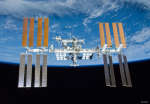 The International Space Station over Earth
The International Space Station over Earth
18.04.2016
The International Space Station is the largest object ever constructed by humans in space. The station perimeter extends over roughly the area of a football field, although only a small fraction of this is composed of modules habitable by humans.
 Dark Sky, Bright Sun
Dark Sky, Bright Sun
2.09.1997
In low Earth orbit there is not enough atmosphere to diffuse and scatter sunlight, so shadows are black and the sky is dark - even when the Sun shines. The harsh lighting produced this dramatic...
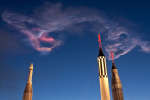 Discovery s Dawn
Discovery s Dawn
9.04.2010
On April 5, visitors to Kennedy Space Center saw these colorful clouds, twisting and drifting through dawn skies. Of course, the clouds were rocket engine plumes from the predawn launch of the space shuttle Discovery on the STS-131 mission to the International Space Station.
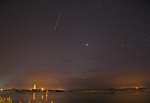 Shuttle and Meteor
Shuttle and Meteor
14.08.2009
This early morning skyscape was captured last week on August 4th, looking northeast across calm waters in the Turn Basin at NASA's Kennedy Space Center. In a striking contrast in motion, the space...
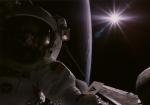 Dark Sky, Bright Sun
Dark Sky, Bright Sun
17.05.2003
In low Earth orbit there is not enough atmosphere to diffuse and scatter sunlight, so shadows are black and the sky is dark - even when the Sun shines. The harsh lighting produced this dramatic...
 Space Station Mir Over Earth
Space Station Mir Over Earth
15.09.1995
This picture of the Russian space station Mir over the Pacific Ocean was recorded by the Space Shuttle Discovery in February 1995. During this mission Discovery performed a rendezvous and "fly around" with Mir in preparation for a future docking mission.
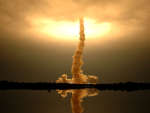 Endeavour to Orbit
Endeavour to Orbit
16.03.2008
Birds don't fly as high. Airplanes don't go as fast. The Statue of Liberty weighs less. No species other than human can even comprehend what is going on, nor could any human just a millennium ago. The launch of a rocket bound for space is an event that inspires awe and challenges description.
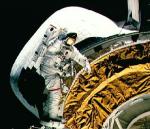 Space Walz
Space Walz
26.09.1998
Astronaut Carl Walz waves at his colleagues from the aft end of the Space Shuttle Discovery's payload bay. During this 1993 spacewalk, Walz evaluated tools, tethers, and a foot restraint designed for use in a weightless environment while orbiting Planet Earth.
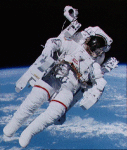 Floating Free in Space
Floating Free in Space
11.10.1997
NASA astronauts can float free in space without any connection to a spaceship. Here astronaut Bruce McCandless maneuvers outside the Space Shuttle Challenger by firing nitrogen gas thrusters on his manned maneuvering unit (MMU). This picture was taken in 1984 and records this first untethered spacewalk. The MMU was developed because astronauts found tethers restrictive.
|
January February March April May June July |
|||||||||||||||||||||||||||||||||||||||||||||||||